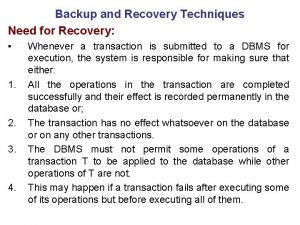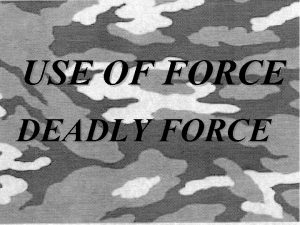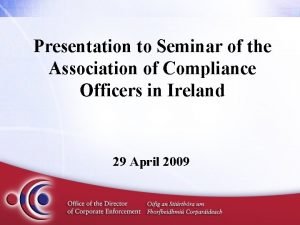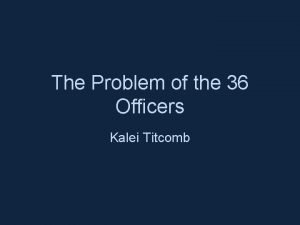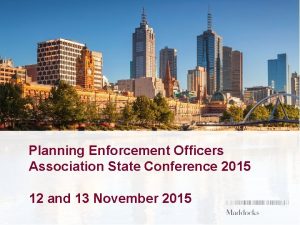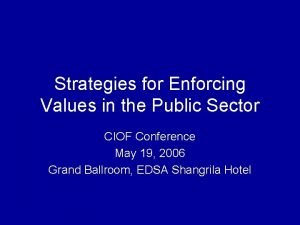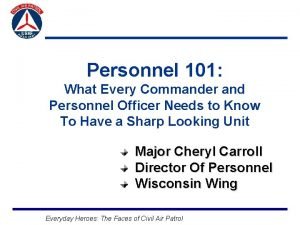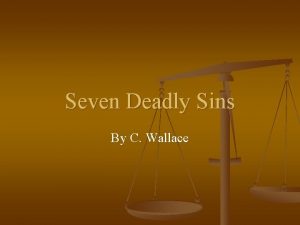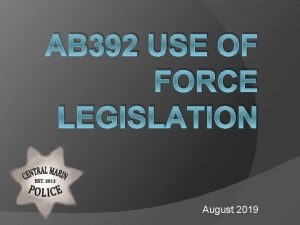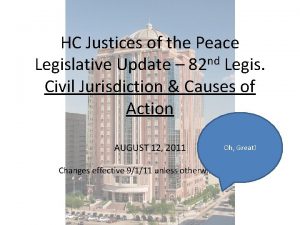Legislative Update AB 392 PEACE OFFICERS DEADLY FORCE

Legislative Update: AB 392 PEACE OFFICERS: DEADLY FORCE

Background Approximately 1, 000 persons are killed annually in Officer Involved shootings. This reflects approximately. 00002% of police and civilian interactions 45% are white men; 23% are black men; 16% are Hispanic men Women account for approximately 5% Approximately 25% are in mental distress (some say as high as 50%) 54% have been armed with firearms 4% are unarmed Source: Washington Post Tracking System

Traditional Guidelines for Deadly Force Tennessee v. Garner – Deadly force to prevent escape of fleeing suspect Graham v. Connor – Objective reasonableness standard for when/how much use of force Plumhoff v. Rickard – Excessive force (pursuit, to multiple rounds in a vehicle leading up to the death of Rickard and his passenger) County of Los Angeles v. Mendez – Provocation rule (provoking or escalating the situation into a use of force incident)

“Deadly Force” Defined 835 a(e)(1) – Any use of force that creates a substantial risk of causing death or serious bodily injury, including but not limited to the discharge of a firearm. Unknown if Taser, or other “less lethal” options, will fall under this based on “risk of causing death or serious bodily injury” from excited delirium

“Totality of Circumstances” Defined: All facts known to the peace officer at the time, including the conduct of the officer and the subject leading up to the deadly force

“Imminent” Defined: Based on the totality of the circumstances, a reasonable officer in the same situation would believe a person has the present ability, opportunity, and apparent intent to immediately cause death or serious bodily injury to the officer or another Notice three key words: Ability, opportunity, and apparent intent Imminent harm is not the fear of future harm, no matter how great the fear or the likelihood of the harm. The harm must be instantly confronted and addressed.

Apprehending a Fleeing Felon: 835 a(c)(1)(B) – The use of deadly force now requires three conditions in order to be justified: 1. The underlying felony must have either threatened or resulted in death or serious bodily injury, AND 2. The officer must reasonably believe that the person will cause death or serious bodily injury to another unless immediately apprehended 3. If feasible, the officer shall make reasonable efforts to identify themselves and warn that deadly force may be used – unless there are objectively reasonable grounds to believe the person is aware of those facts.

Suicidal Persons 835 a(c)(2) – No deadly force is justified based solely on the danger a person poses to themselves, unless an objectively reasonable officer would believe the person poses an “imminent” threat of death or serious bodily injury to the officer or another person

Retreat 835 a(d) – Peace officers need not retreat or desist by reason of the resistance – actual or threatened – of the person being arrested. **retreat does not mean tactical repositioning or other de-escalation tactics

So, What’s Different? 196 PC Removed, “When necessarily committed in overcoming actual resistance to the execution of some legal process or in the discharge of any other legal duty. ” Removed, “When necessarily committed in retaking felons who have been rescued or have escaped, or when necessarily committed in arresting persons charged with felony and who are fleeing from justice or resisting such arrest. ” 196 PC now states: (a) In obedience to any judgement of a competent court (b) When the homicide results from a peace officer’s use of force that is in compliance with Section 835 a.

So, What’s Different - Continued Graham v. Connor use of force standard is narrow, judging only the moments immediately before the use of deadly force to determine whether officers felt they or another person were in imminent danger. 835 a(e)(3)’s definition of “totality of the circumstances” expands the analysis beyond what the officer did at the time of the shooting, to what he/she did – or did not do – before deadly force was used. This means pre-shooting tactical conduct and decisions on the part of the shooting officer, and potentially his/her supervisor on scene, may now be relevant, as part of the “totality of circumstances”, that an otherwise reasonable use of deadly force was in fact unreasonable and therefore unjustified

So, What’s Different - Continued 835 a PC Emphasis on apparent mental state or capacity of the individual and their apparent ability to understand comply with officer commands. Availability of other reasonable and feasible options and their possible effectiveness.

So, What’s Different - Continued AB 392 now arguably requires the OIS team to consider other “available techniques and resources”, meaning tactics and de-escalation options, training relevant to the event, and possibly department policies into its investigation of the use of deadly force As long as an officer’s conduct falls within the range of conduct that is reasonable under the circumstances, there is no requirement that he or she choose the most reasonable action or the conduct that is the least likely to cause harm

So, What’s Different - Continued 835 a(a)3 – Peace Officers shall carefully and thoroughly evaluate the decision to use force in a manner that reflects the gravity of that authority and the serious consequences of the use of force, to ensure that officers use force consistent with law and agency policies Agency policies are now included in the District Attorney’s review of the case

So, What’s Different - Continued 835 a now requires that law enforcement use deadly force only when “necessary” 835 a(2) As set forth below, it is the intent of the Legislature that peace officers use deadly force only when necessary in defense of human life. In determining whether deadly force is necessary, officers shall evaluate each situation in light of the particular circumstances of each case, and shall use other available resources and techniques if reasonably safe and feasible to an objectively reasonable officer. AB 392 doesn’t provide clear language on what “necessary” means. Addition of the word “objectively”

OIS Investigation There are five areas that will need to be articulated in an OIS investigation: 1. Necessary 2. Imminent 3. Totality of circumstances 4. Other available resources and techniques 5. Reasonable

Black and White? As with many new laws, the language is vague in AB 392, without clarifying definitions. Future case laws will ultimately clear up some of the muddy language. Our Firearm Instructors do a great job in the Force Option Simulator. Take this training, as well as the narrative which follows, seriously. Articulation of what we do, and why we do it has never been more important. Know our Use of Force Policy (Lexipol Policy 300. ) Although it closely mirrors the law, it’s very important to review it often and know it well. If there’s an ability to slow things down and utilize other options, do so. We will be evaluated on this. Again, this is only in cases where it’s feasible. Use your BWC’s! The video and audio will often capture the pre-planning, tactics, emotional state, verbal commands, etc.

Sources Solano County District Attorney’s Office Line Driven Strategies LLC – Sean Kenney CDAA Training Development - Patrick Mc. Grath Lexipol Policy 300 – Use of Force AB 392
- Slides: 18

